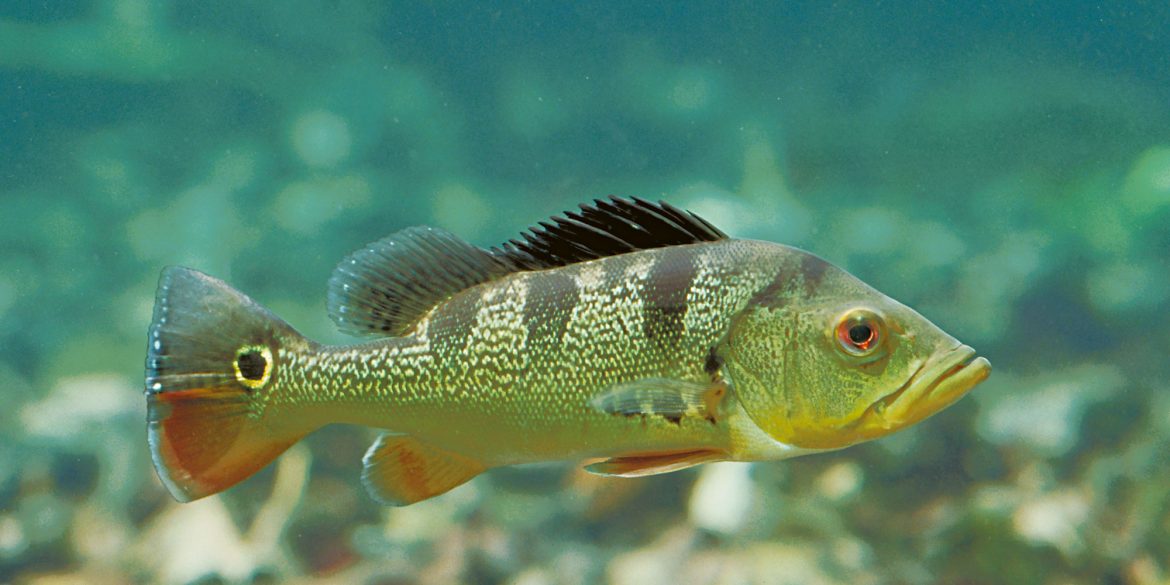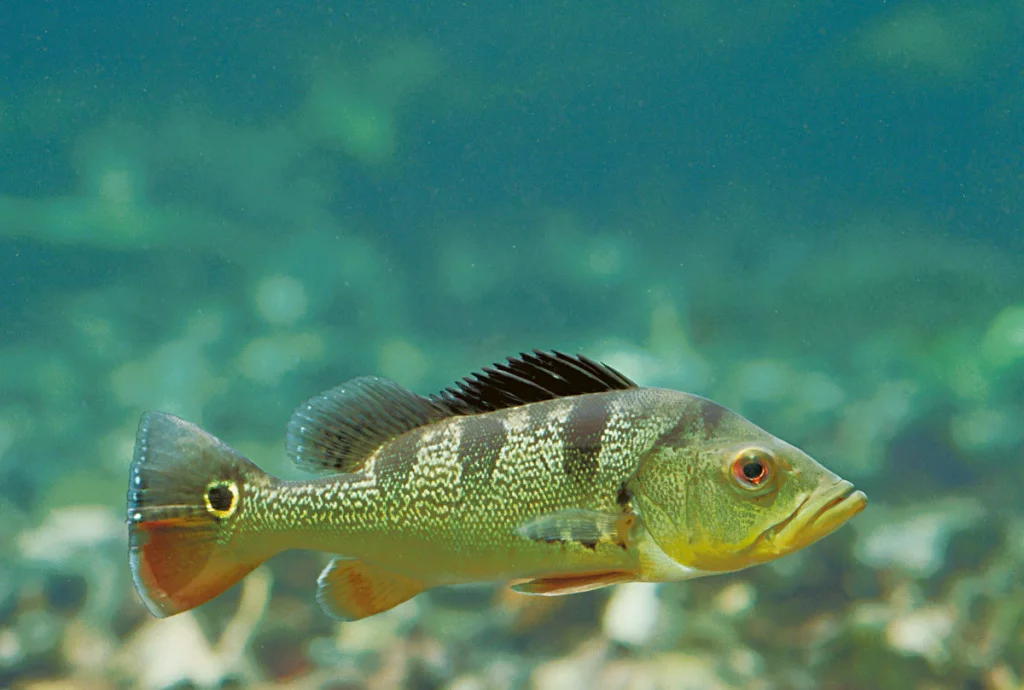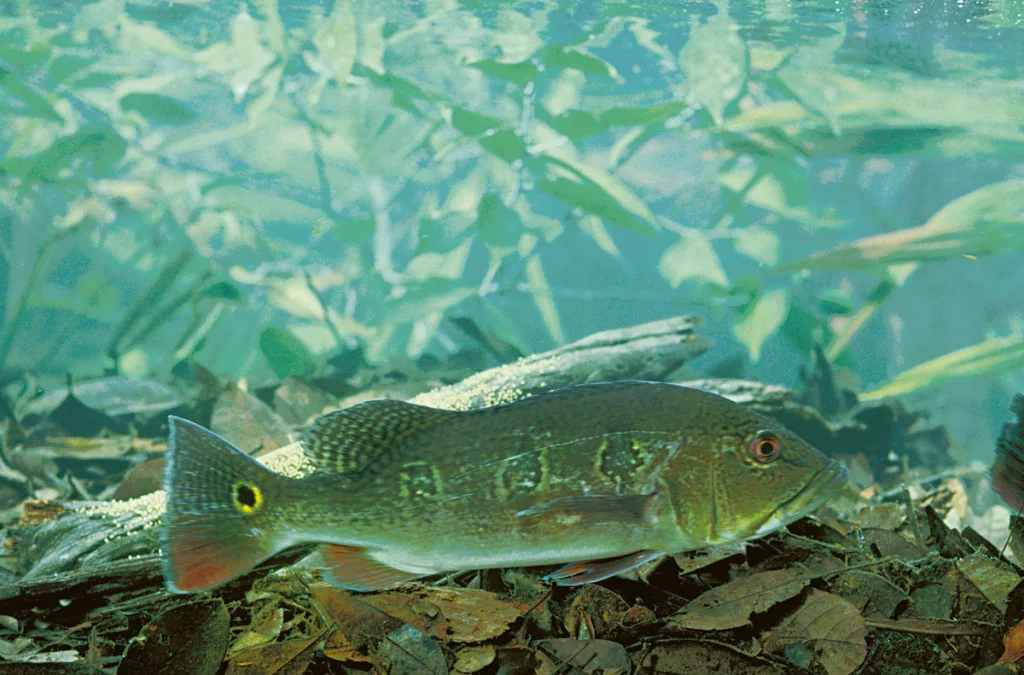
Length Category: Small (<40 cm)
Trophic Level: Predator-fish
Migratory Pattern: Local (<100 km)
Spawning Period: All periods
Export Market: National (outside Amazon)
Market Status: First class
Catch Distribution:
Tucunaré potential yield was estimated to be approximately 4,300 tons. Nearly half of the potential catch comes from the Central Amazon (52%), followed by the Tocantins (27%), Peruvian Amazon (8%), and Estuary (6%) regions. A large part of the Central Amazon catch, however, comes from the large Balbina Dam reservoir near Manaus.
Natural History Notes:
There are three to four species in the tucunaré commercial fish group. All are voracious piscivores that live mostly in quiet waters. Some species, however, can be common in beach waters of river channels during the low water period. Tucunarés are also the most important sport fishing species because of their beauty and fighting abilities. There is some evidence that in floodplain areas that have been heavily exploited for several decades, tucunaré have begun to mature at smaller sizes.

Distribution of tucunaré catch. Source: Barthem, R., Goulding, M. 2007. An unexpected ecosystem: the Amazon as revealed by fisheries. Missouri Botanical Garden Press.
Check our quarterly Ictio reports here.
Check the tucunaré observation records in the citizen science platform Ictio here.
Tucunaré gallery
-

MichaelGoulding_14179-1001-1024×690
Cichla monoculus. Fotógrafo: Michael Goulding.
-

MichaelGoulding_14725-1001-1024×675
Cichla orinocensis. Fotógrafo: Michael Goulding.
| Brazil | |
| Jacunda | Cichla monoculus |
| Lucanari | Cichla monoculus |
| Sarabiana | Cichla temensis |
| Tucunare | Cichla temensis |
| Tucunaré-açú | Cichla monoculus |
| Tucunare-paca | Cichla temensis |
| Tucunaré-pinima | Cichla temensis |
| Colombia | |
| Tucunaré | Cichla temensis |
| Tucunaré | Cichla monoculus |
| Pavón | Cichla monoculus |
| Ecuador | |
| Vieja | Cichla temensis |
| Peru | |
| Pavón | Cichla temensis |
| Tucunaré | Cichla monoculus |
| Tucunaré | Cichla temensis |
| Pavón | Cichla monoculus |

